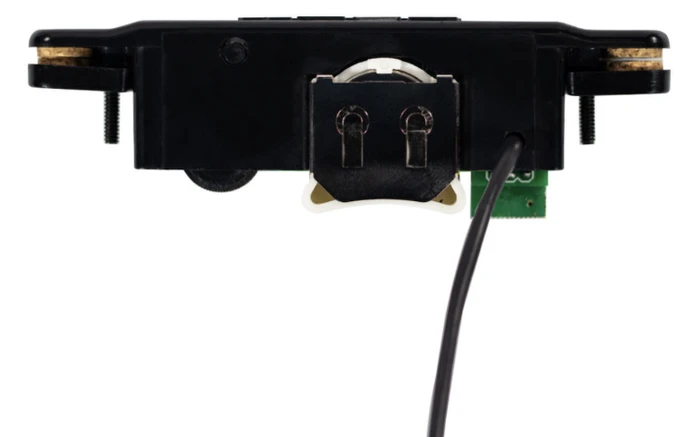
The Mojotone Quiet Coil NC-2 pickup for acoustic guitar altered my impressions of magnetic soundhole pickups. I have been very familiar with the available offerings from various manufacturers and, frankly, that is why I have not used them. Until now, that is. Mojotone, well-known for their electric guitar and bass pickup products, re-engineered the magnetic soundhole pickup which resulted in the NC-1 model. They took things to the next level with the NC-2 by adding a microphone and onboard blending option.
There may always be a place for a portable, easy-to-install acoustic guitar pickup. As ubiquitous as such a device is today, this was not the case when I was a boy. When I began performing on acoustic guitar, there were no pickups of any kind available to me. If greater volume was required, it was necessary to either play in an amphitheater or use a microphone with some form of costly sound reinforcement. The former translated to limited performances, as amphitheaters aren't portable. And few of the boys and girls I grew up with could afford amplifiers, let alone full-fledged Public Address Systems along with decent quality microphones. An even smaller group of people had access to sound engineers who could monitor and control feedback.
To have any chance at successfully using a microphone, it was necessary to learn to perform in front of the microphone. There was no movement allowed, none of this wandering about on stage. The mic was mounted to a stand and the performer, once positioned, did not move away from that mic. You were punished by feedback if you did. Ah, those were the days!
The early piezo soundboard transducers changed everything for performing musicians. Les Barcus, audio engineer and inventor, and his partner John Berry, violinist, teamed up in 1964 to bring us the first successful means of amplifying acoustic instruments without the use of microphones.
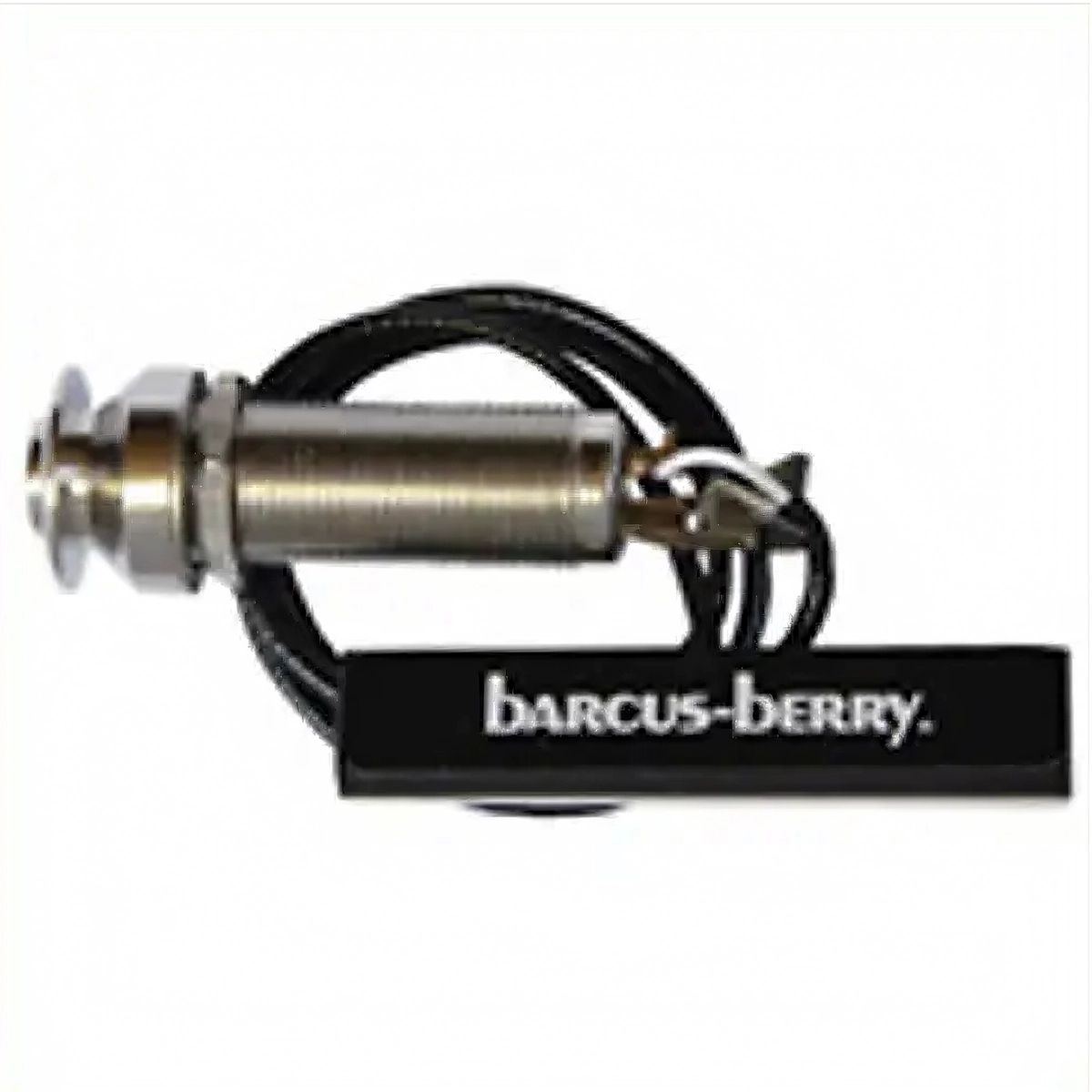
Barcus-Berry Piezo Transducer
Arnie Lazarus introduced the Flat Response Audio Pickup in 1969 and FRAP was born.
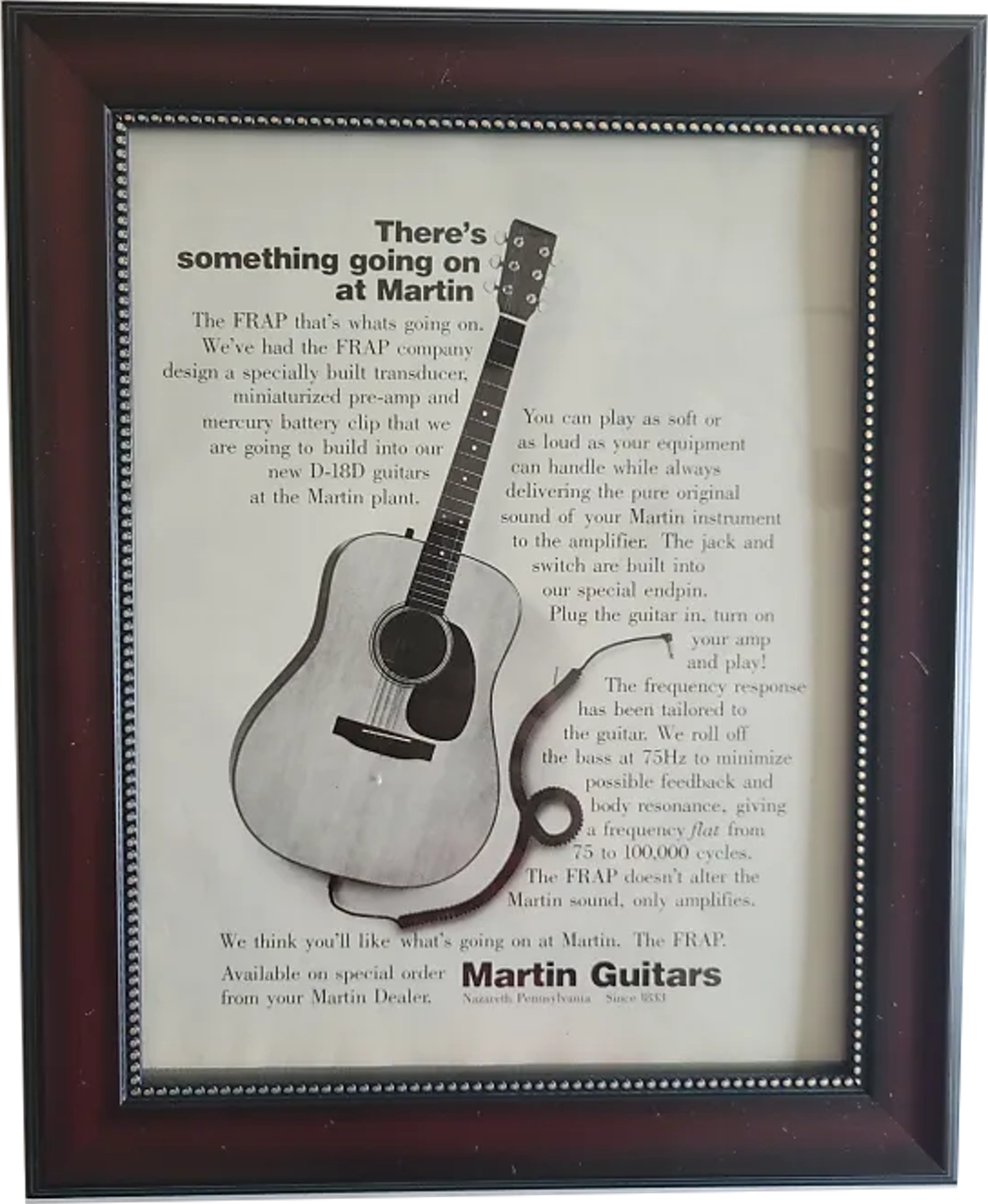
FRAP and Martin - 1975
I purchased by first Barcus-Berry transducer in 1976. It attached with putty, making it easily re-positionable. The signal was super HOT, and it had to be toned down to be palatable, but suddenly I was freed from the incredibly restrictive positioning in front of microphones.
During that same period of the mid-1970s, Bill Lawrence introduced his FT-145 magnetic soundhole pickup. I first encountered that pickup 1978, when I walked into a dinner house that was featuring a talented local performer. I was immediately smitten by the young lady's beautiful voice, accompanied by her Guild F-412 12-string. The sound of her guitar was being generated by that Lawrence pickup, whose signal was passed through a MXR 10-band EQ and a Mu-tron II Phase Shifter before being amplified for us mere mortals. It was an enthralling experience for me. Though it wasn't exactly an acoustic reproduction, it sounded great at the time.
I purchased that same model pickup and installed it in my own Guild guitar. And it didn't sound all that great, at least nowhere near as great as I remembered. In truth, it was a lot more "electric" sounding than I cared for. And so began a lesson that took decades to learn. But that is subject matter for another article.
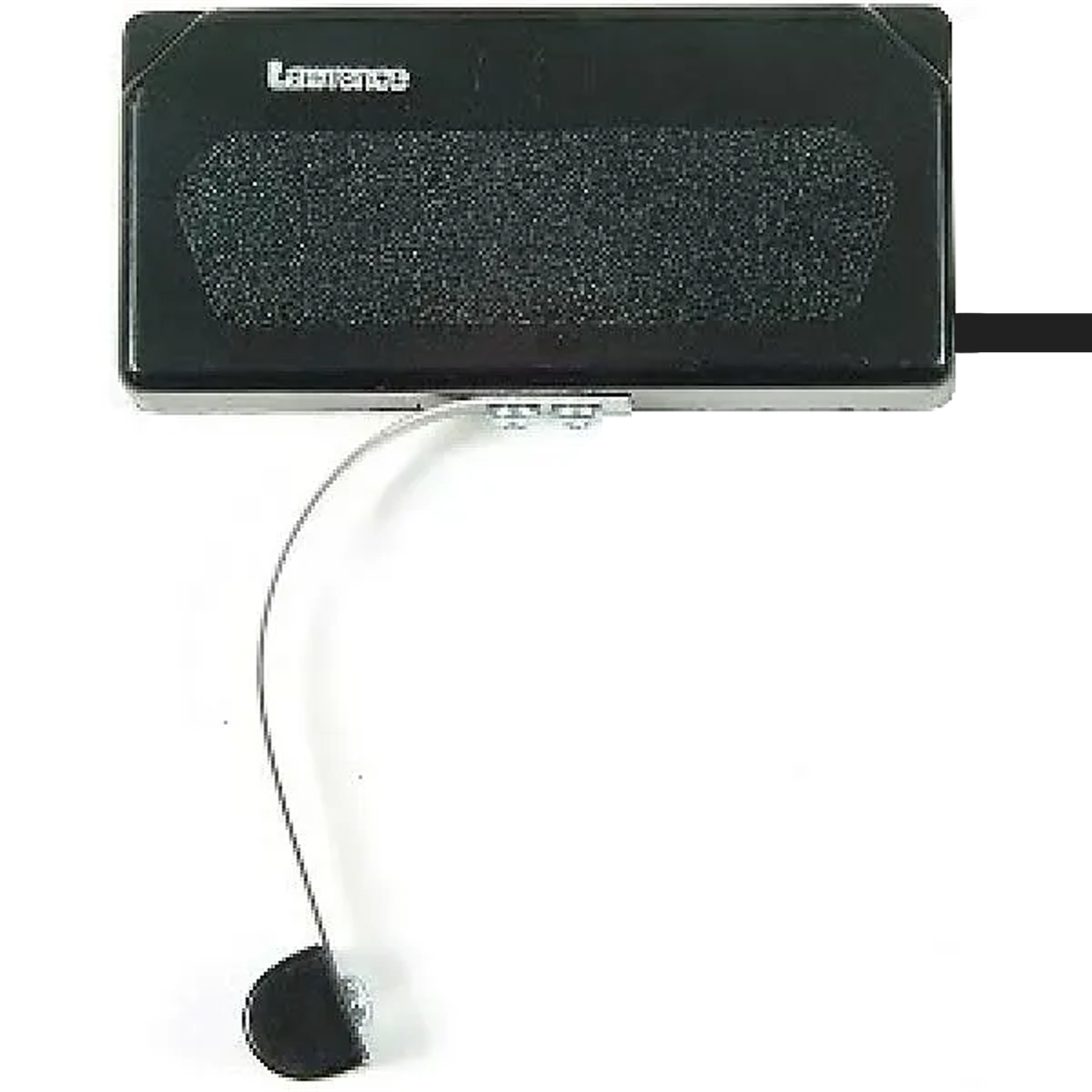
Bill Lawrence FT-145
Jim Kaufman introduced his Sunrise magnetic soundhole pickup in 1985. I believe it is safe to say that the Sunrise quickly became "the standard" by which magnetic pickups for acoustic guitars were judged. The Sunrise added a feature to the otherwise "electric guitar" sound, that being an ability to sense body resonance and couple it with the signal from the strings, all while maintaining an impressive 116dB feedback threshold. For best results, it is highly recommended to also use the Sunrise preamp, either single or dual channel. Pickup and preamp combined are a $800 - $900 investment, all for a system that still sounds kind of like an electric guitar.
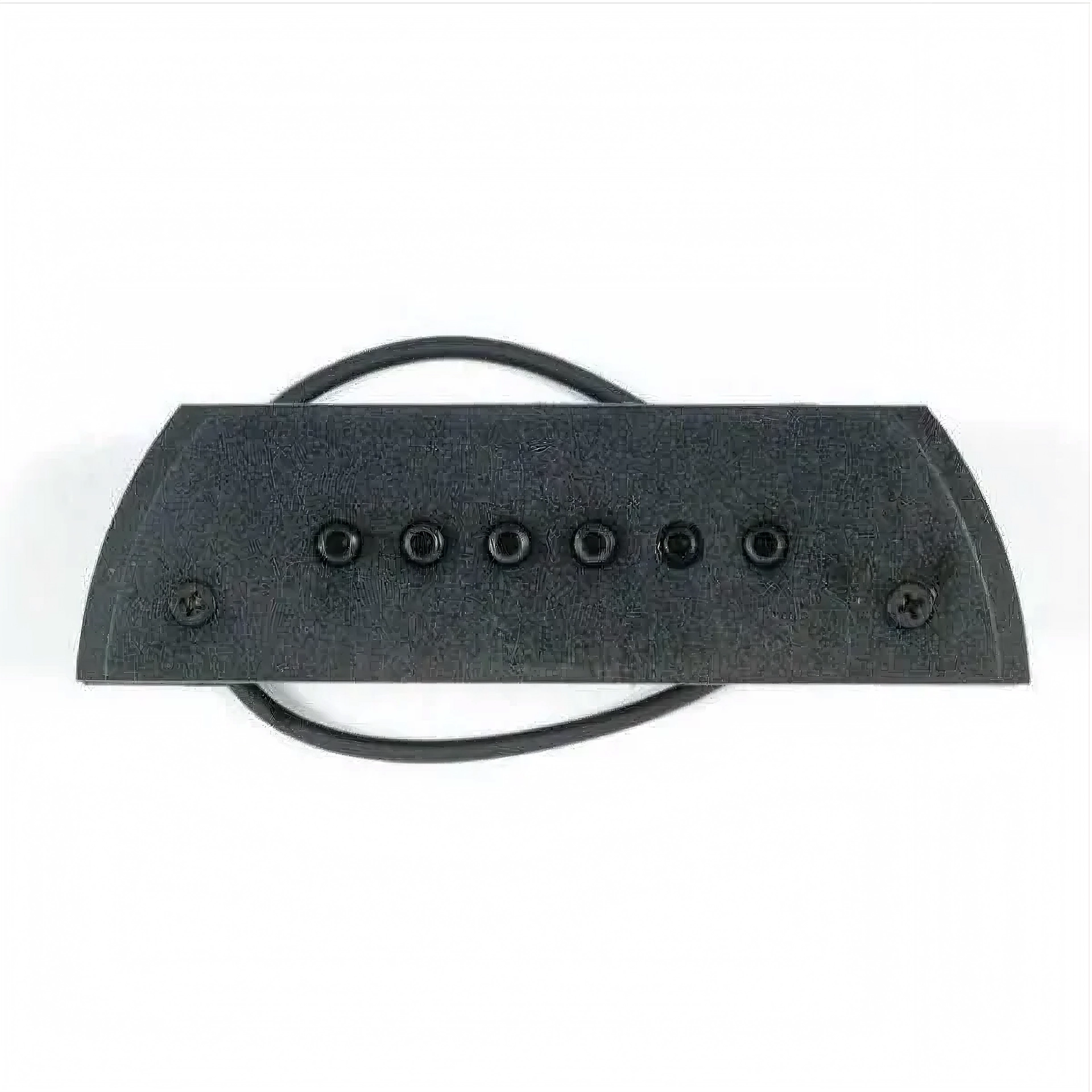
Sunrise pickup
David Shepherd took Mojotone's extensive magnetic pickup knowledge in a new direction when he developed the NC-1 soundhole pickup for acoustic guitar. He delivered a remarkable product by combining Mojotone's own noise-cancelling single humbucker design with an onboard noiseless preamp. That is no small feat! The need for adjustable pole pieces was eliminated by balancing the output volumes of the strings. The preamp was "voiced" to mimic the sound of the strings as if they were being played through a condenser microphone. The player was given easy access to a built-in volume control wheel. With a battery design allowing up to 500 hours of play time, and a discreet "Test" button to check on battery life, the Quiet Coil NC-1 may have become the best magnetic soundhole pickup ever made.
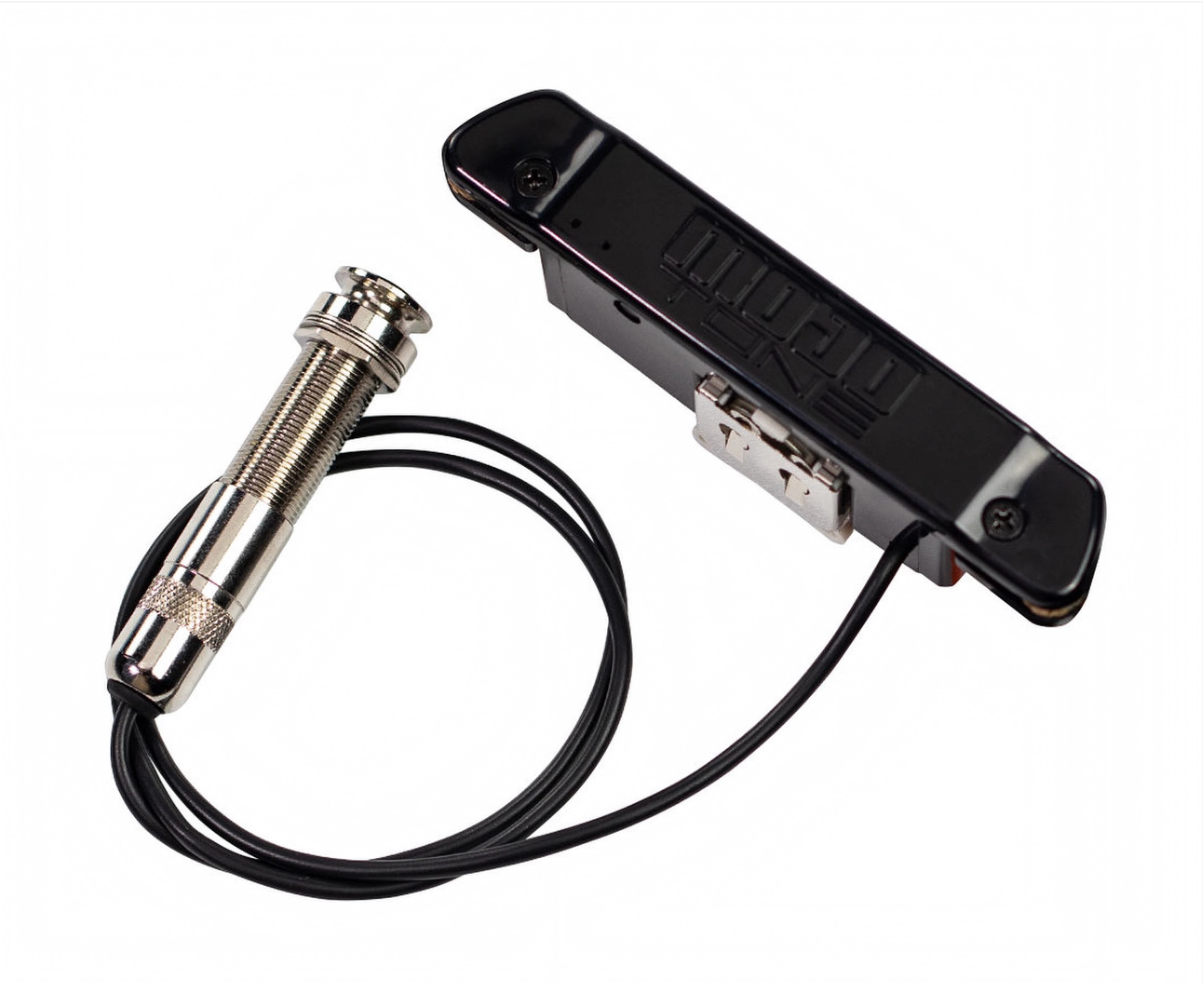
Mojotone Quiet Coil NC-1
Except that I found a pickup that is even better!
Mojotone improved on their own fabulous NC-1 pickup by ADDING a condenser mic and a blend wheel, and calling the new product the Quiet Coil NC-2. With no outboard gear, no extra signal processing, just raw pickup fed directly into an amp, I believe you will be hard pressed to tell that this is a magnetic design. Anything you add is a bonus. The Mojone Quiet Coil NC-2 includes a Mogami cable, Switchcraft jack, and natural (non-marking) cork, all in a feather-weight design.
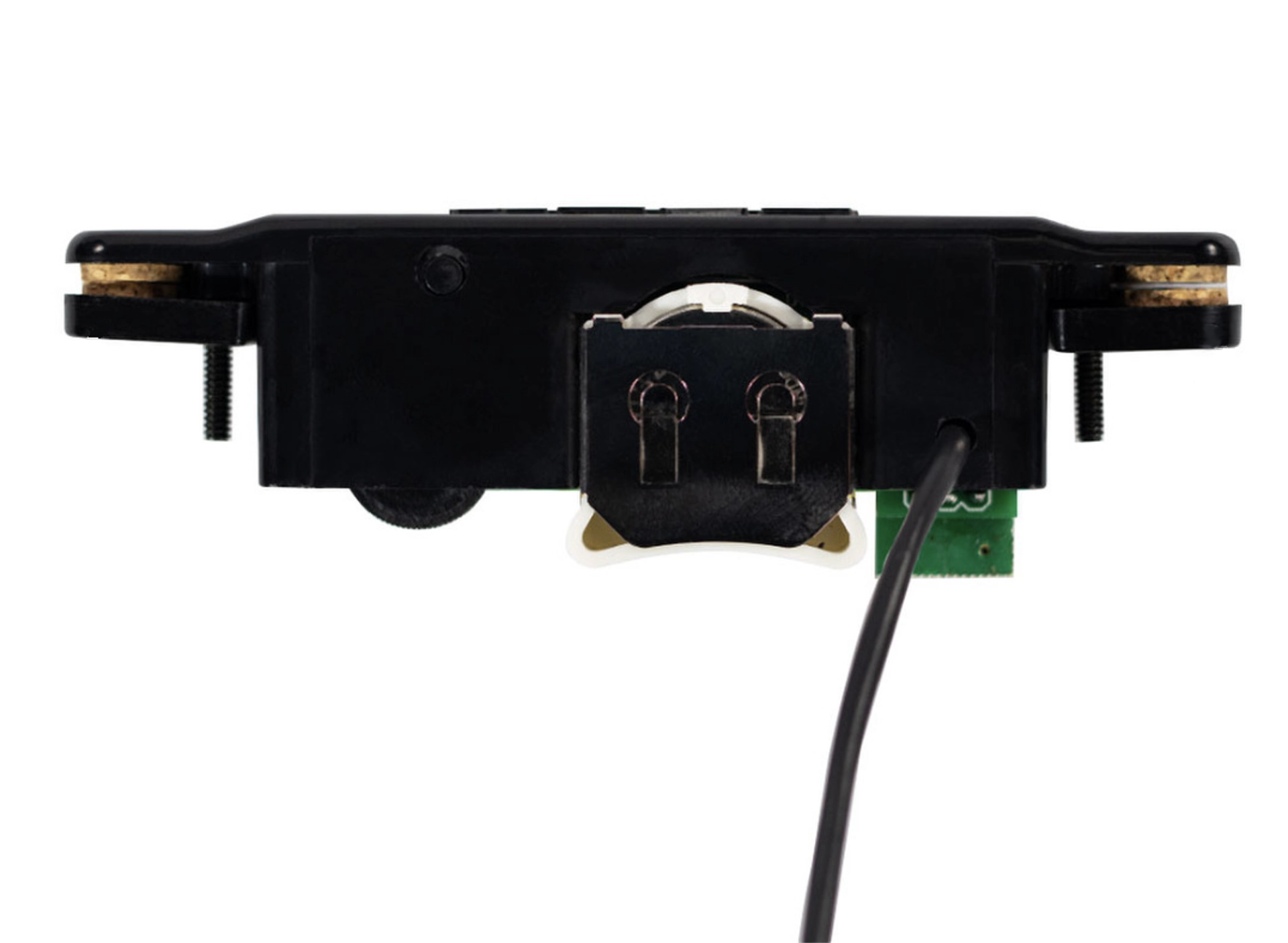
Mojotone Quiet Coil NC-2
You'll need a small Philips screwdriver to tighten the two screws on the wings, once you have slid this pickup under the strings and set it in place in the soundhole.
If you don't want to install the pickup permanently, you are all done! I choose to wire the pickup for a permanent installation, so that requires the same "solder the wire to the endpin jack" effort any other pickup installation needs.
As a "boutique" builder of acoustic guitars I am expected to provide state-of-the-art solutions for the accurate amplified reproduction of a guitar's acoustic tone.
For the acoustic purist, the quest for "My guitar, only louder!" is seemingly never-ending, and usually involves piezo crystals and preamps.
In my experience, magnetic soundhole pickups, flexible and useful as they are, have not been able to replace the likes of a Barbera Transducer, James May Ultra Tonic, Trance Amulet M, etc. Even with heavy processing, "electric guitar" pickups are considered an accompaniment to, not a replacement for, high-end piezo solutions.
Until now, that is. I have begun recommending this pickup for consideration by my own discriminating acoustic guitar clients.
Very nicely done, MojoTone!
You can read more about the Mojotone Quiet Coil NC-2 pickup on their website » MOJOTONE Quiet Coil NC-2